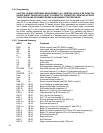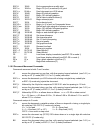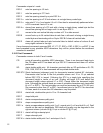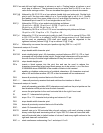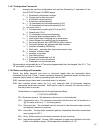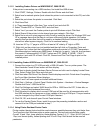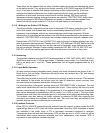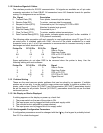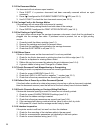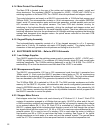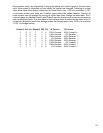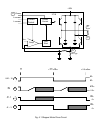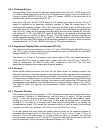
These fonts can be selected like any other font after loading the driver and selecting the printer
as the default printer. They will print and display correctly in WYSIWIG programs like MS Word
only if a font size is selected that displays characters at their correct spacing. A font size
selection that displays characters at a smaller spacing will print slowly as the printhead
repositions to print each character closer than its nominal spacing. MS Word curiously
decreases character spacing as larger font sizes are selected. FONTTEST.DOC on the driver
disk can be opened in MS Word or Wordpad and printed to demonstrate the resident fonts.
Insure that the left margin is set to 0.2" for the fonts and display to read correctly.
3.11.5 Writing to the Printer LCD Display
The driver includes 4 pseudo-fonts that write to the printer LCD display rather than print. The
action that selects one of these fonts must be immediately followed by EXACTLY 16
characters to be displayed, without any intervening page positioning commands. All data
following the 16 characters will be printed in the font that was selected before the pseudo-font
selection. FONTTEST.DOC on the driver disk includes display writes using all 4 pseudo-fonts.
Pseudo-fonts LCD TOP DLY and LCD BOT DLY write to the top and bottom display lines only
after all previous data has printed. Pseudo-fonts LCD TOP IMM and LCD BOT IMM write to the
top and bottom display lines as soon as they are sent to the printer, even if all previous data
has not yet printed. Standard Craden display commands, ESC BEL, ESC FS, ESC DC3 and
ESC GS, can still be used by applications able to write control characters to the printer.
3.12 Interfacing
The standard interface provides RS-232 communications at 1200, 2400, 4800, 9600, 19200 or
38400 baud and has an 11 Kbyte input buffer. Characters may contain 7 or 8 data bits, even,
odd or no parity and 1 stop bit. These parameters are all keypad programmable by 9 3
FUNCT.
3.12.1 Input Buffer Operation
All data received except immediate status, display and reset commands are placed in an 11
Kbyte first-in, first-out buffer. Characters with parity errors are replaced by a "@" and framing
errors are replaced by a “~”.
The buffer may be used to receive all commands for printing an entire document. This reduces
host attention to the printer but caution must be used to determine correct recovery from
document jams and operator intervention during printing.
If a document jams in the printer, printing stops and "DOCUMENT JAM" is displayed. The next
status word transmitted will have the document jam bit set. Once notified, the host may write
recovery instructions to the display. If the transaction is to be restarted, previously transmitted
data can be destroyed by transmitting a DC4 in mode C or a CAN in mode I. The host should
request status and check the document jam bit in the status word before re-transmitting data.
The operator may also destroy the buffer contents by pressing CLEAR after removing the
document and moving the printhead to the left wall. The host must then be notified by the
operator that the transaction data may be re-transmitted.
3.12.2 Interface Protocols
Either DTR or XON/XOF protocols may be selected from the keypad. In these modes the DTR
signal will go false or a DC3 (Xmit off) will be transmitted if less than 1000 characters of space
are available in the buffer when a CR or document movement command is received.
Transmission from the host must then pause. DTR will later go true or a DC1 (Xmit on) will be
transmitted when space becomes available and host transmission may resume. DTR is
equivalent to most systems’ hardware protocol.
18



